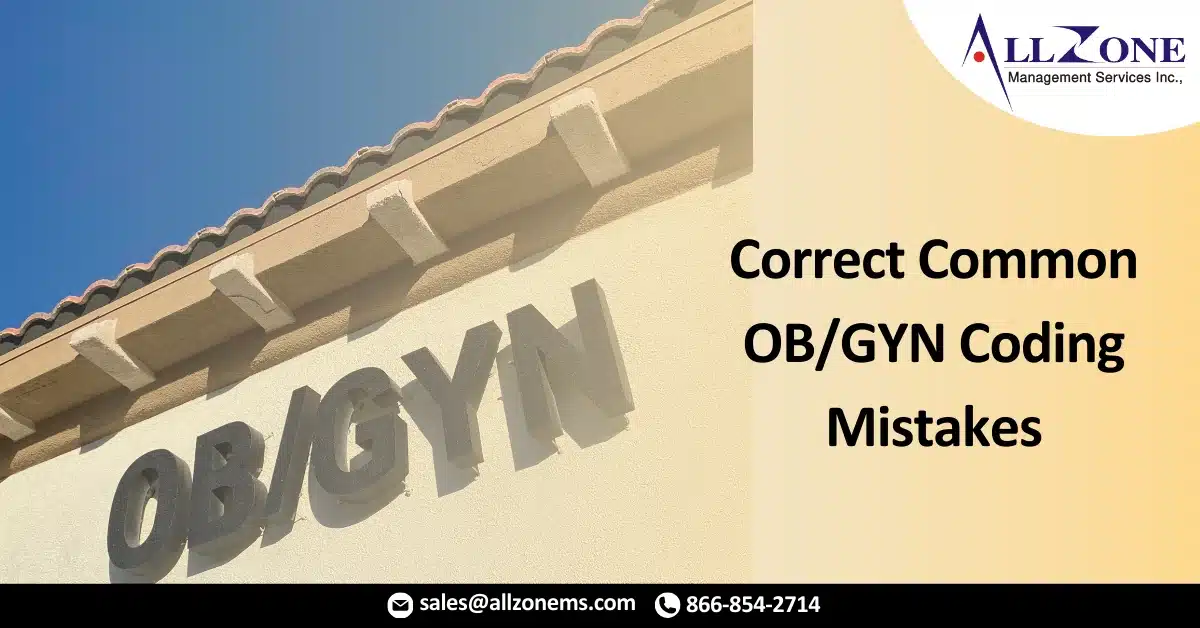Overlooking separately billable services rendered during the global period will cost your practice dearly.
Many obstetrics/gynecology (OB/GYN Coding) practices are coding deliveries incorrectly or failing to submit claims for “problem visits” during a prenatal or postpartum visit. Common mistakes such as these not only fail to capture payment for services rendered but also the meaningful data that ultimately support patient outcomes. Here are a few examples of how poor OB/GYN coding does a disservice to both the practice and patient.
Global Period Doesn’t Cover Everything
Services rendered during the global period of another service are often overlooked. “Typical” prenatal and postpartum visits are a part of the global delivery package. Problems not related to pregnancy, such as yeast infections, vaginitis, and sexually transmitted diseases (STDs), are not part of the global delivery package. Problems not related to pregnancy may be billed separately at the time of service or treatment.
Example 1
A patient comes in for her routine prenatal visit and complains of a vaginal discharge with odor. The physician performs an exam, collects cultures for a wet prep, and discovers acute vaginitis. The provider educates the patient on bacterial vaginosis and treats it with clindamycin. The additional codes to assign on this claim, outside of prenatal codes, are:
CPT®: 99213 Office or other outpatient visit for the evaluation and management of an established patient, which requires at least 2 of these 3 key components: An expanded problem focused history; An expanded problem focused examination; Medical decision making of low complexity and 87210 Smear, primary source with interpretation; wet mount for infectious agents (eg, saline, India ink, KOH preps); or, for some payers (including Peachstate Health Plan, Aetna, Medicaid, and Amerigroup), HCPCS Level II Q0111 Wet mounts, including preparations of vaginal, cervical or skin specimens (rather than 87210) for the wet prep.
ICD-10: N76.0 Acute Vaginitis
The provider should document the details of the visit on the encounter note. If you see a patient was diagnosed and treated for problems outside of global delivery but do not see an evaluation and management (E/M) service level billed, query the provider.
Example 2
A patient presents for her postpartum visit and decides she wants to discuss birth control options. The provider reviews the patient’s history and presents the birth control options to the patient. The patient elects to start the Mirena intrauterine device (IUD). The provider orders the device and schedules an appointment for the patient to return to the office for insertion. Additional codes to assign on this claim, outside of postpartum codes, are:
CPT®: 99213-24 Unrelated evaluation and management service by the same physician or other qualified health care professional during a postoperative period
ICD-10: Z30.09 Encounter for other general counseling and advice on contraception and Z30.014 Encounter for initial prescription of intrauterine contraceptive device
Example 3
A patient presents for a postpartum visit. She informs the provider that she is depressed and has had occasional thoughts of self-harming. The provider reviews the patient’s history, performs an exam, prescribes antidepressant medication, and refers the patient to a psychologist. The staff at the provider office schedules the patient’s appointment with the psychologist. OB/GYN Coding for the encounter is:
CPT®: 99214-24 Office or other outpatient visit for the evaluation and management of an established patient, which requires at least 2 of these 3 key components: A detailed history; A detailed examination; Medical decision making of moderate complexity
ICD-10: F53.0 Postpartum Depression
If necessary, educate providers on the importance of documenting history, exam, treatment, and/or time. When billing E/M services during the global period, it’s always good to attach the encounter notes with a note stating your reason for the attachment.
Don’t Fumble Delivery OB/GYN Coding
Often, patients who previously have had a cesarean birth may want to have a subsequent vaginal delivery (a.k.a., vaginal birth after cesarean (VBAC)). The proper global CPT® code for a successful VBAC is 59610 Routine obstetric care including antepartum care, vaginal delivery (with or without episiotomy, and/or forceps) and postpartum care, after previous cesarean delivery. Many providers incorrectly report 59400 Routine obstetric care including antepartum care, vaginal delivery (with or without episiotomy, and/or forceps) and postpartum care. Although payers may approve this claim, the OB/GYN coding (and reimbursement) is inaccurate.
If an attempted VBAC is not successful, proper OB/GYN coding is 59618 Routine obstetric care including antepartum care, cesarean delivery, and postpartum care, following attempted vaginal delivery after previous cesarean delivery, rather than 59510 Routine obstetric care including antepartum care, cesarean delivery, and postpartum care, which is sometimes chosen by mistake. Because of the extra work involved in 59618, payers do reimburse more.
For More Information: https://www.aapc.com/blog/47295-correct-common-ob-gyn-coding-mistakes/

